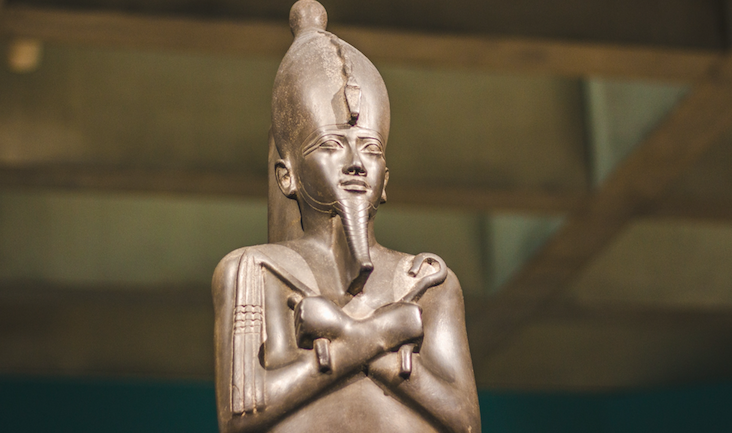The voice of an Ancient Egyptian priest who fell silent over 3000 years ago has been brought back to life thanks to a team of scientists from Royal Holloway and the University of York.
The group, part of the ‘Voices of the Past’ Project, created a 3-D printed model of the man’s vocal tract constructed from CT scans. An electronic source placed in the model was then used to generate the sound.
Who was he?
Hieroglyphs on his coffin reveal the identity of the man to be that of a priest named Nesyamun, who likely died in his 50s. Nesyamun’s voice would have been instrumental in his role in the state temple of Karnak, in Thebes, where he would have been required to perform spoken, as well as sung, rituals.
His remains have been dated to the reign of Ramses XI (1099-1069BC), the only example of a mummy verified to have been from this period.
Nesyamun’s mummified remains were chosen for this project due to his remarkably well-preserved vocal tract.

© Leeds Teaching Hospitals/Leeds Museums and Galleries.
How do vocal tracts create voices?
When we speak, the vocal tract acts as a resonator to filter certain tones. The precise shape and size of the cavity, which extends from the top of the windpipe to the lips, determines the frequencies of sound that resonate, and therefore the tones that a person is able to produce.
When CT scans were conducted at Leeds General Infirmary, it became clear that Nesyamun’s tongue has lost much of its muscle and that his soft pallet is missing. However, since the rest of the vocal tract is so well preserved, the team believe that the sound created is an accurate representation of the tones that he may have made when alive.
Inscriptions on the coffin reveal that Nesyamun had a desire to ‘speak again’, a wish that has been at least partially fulfilled. You can listen to the sound generated here.

Bottom: digital image of the 3D printed model
Image from: https://www.nature.com/articles/s41598-019-56316-y
What’s next?
Whilst the single vowel-like sound may not exactly teach us how to ‘talk like an Egyptian’, the researchers are planning to use a computer model to generate words and sentences in the future.
The team behind the project hope that it will boost public engagement with the mummy, which can be seen and heard at Leeds City Museum, alongside his decorative outer coffin.
In addition, there is hope that the technique used in this project could be used to benefit people who have lost the function of speech following an accident or surgery. By creating models of a patient’s larynx, the researchers believe that it would be possible to provide them with more authentic vocal sounds.
The original research behind this story was published in Nature.





